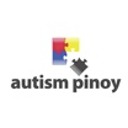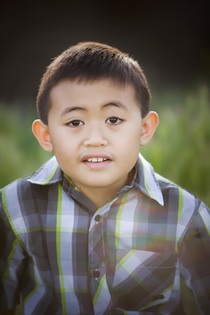An effective intervention program can make a huge difference in the outcome of a child in the
autism spectrum. Many experts in autism now recognize that the most successful intervention
programs address both the needs of the body and mind of the child.
The current analogy in the ASD community is that autism is a puzzle to which we do not have
all the pieces. Our children are also like the pieces of a puzzle which need to be connected
together to make a fully integrated, unified child.
The latest medical research into autism indicates that the brains of our children are internally
disconnected on different levels. The right and left hemispheres of the brain do not optimally
cross-communicate through the brain stem. There is an insufficiency of Purkinge cells in the
brain that provide an information highway linking stored information together in a meaningful
and organized way.
Current research also theorizes that reasons for disconnection or interference in the creation of connections may include immunizations, viruses, neuro-toxins, immune system dysfunction, and maldigestion.
In my search for a holistic intervention approach for Ethan, I chanced upon the Autism Coach website and became a big fan of their approach:
The Autism Coach Intervention Approach:
1. Start an intervention program as soon as possible, and create as intensive a program as your resources will permit.
--The younger the child, the greater the opportunity to build the brain.
2. Remove potentially harmful foods from the diet while introducing supportive supplements and/or medications.
--The majority of children with autism will benefit from the being placed on a gluten free and casein free (GFCF) diet. A child on this diet avoids foods that contain gluten and casein, including wheat and milk products.
Supplements can provide building blocks for proper neurological development and protect the brain from further damage.
3. Find and use sensory pathways through which the child learns best within a structured program that provides the child with essential information about themselves and the outside world, continually building their base of knowledge in an organized fashion.
Some children are visual learners and others are auditory learners - begin teaching your child through their strongest learning pathway - eventually, you may be able to use the child's strongest learning pathway to connect to and strengthen the other pathways.
Applied Behavioral Analysis (ABA) is a rehabilitative therapy that creates structure and meaning by building upon the child's strengths and abilities. An ABA therapist typically first assesses how the child is functioning developmentally in a variety of areas and then creates a program where the child is worked with on a one-on-one basis to successfully complete a series of specific, measurable tasks. These tasks are designed to move the child to the next step in the developmental hierarchy. When these goals are achieved the therapist sets new more challenging goals. The ultimate objective is to increase the development level of the tasks until the child is challenged at an age-appropriate level.
4. Build, strengthen and create organized neurological pathways through which the child can receive and interpret new information.
Integrative therapies such as auditory integration, sensory integration, and visual integration may all be of help in strengthening sensory pathways.
Activities that strengthen the child's ability to multi-task (do more than more thing at a time) can also help to connect the different systems of brain to work together. An example of multi-tasking is to have the child count to twenty while doing jumping jacks on a trampoline. Identify your child's greatest area of sensory difficulty and choose an integrative therapy that addresses it.
5. Keep the child engaged in the outside world and stimulated as much as possible during the day in activities that provide an external structure for building meaning, comprehension and organization.
You want mental stimulation to trigger neurological growth on an on-going basis. Every child needs some down time, but this should not be excessive (as in several unstructured hours in a row on a regular basis).
6. When possible, help your child meet his or her sensory needs in ways that provide positive meaning and purpose.
For children who excessively wiggle their fingers, you can give him/her piano lessons so that finger movement would have purpose. When one begins to flap his or her hands, do push-ups so that the child would get the sensory feedback to the wrists through an exercise that provides coordination for the entire body.
7. If your child suddenly shows a positive new interest or skill, encourage this interest and work it.
This is a sign that the part of the brain involved in this skill is developing new neurological connections which may be more easily strengthened and expanded on. Reinforcing a new skill strengthens the neurological connections currently being made by the brain, helping this new developmental milestone to integrate and generalize more thoroughly within your child's brain.
8. Make interventions fun and low stress - provide lots of incentives.
Research indicates people learn best with humor and that chronic stress reduces the brain's ability to learn and grow - permanently stunting areas of the brain over time. Positive incentives to participate in therapies may include food treats, activities, and toys.
An example of using humor to teach is doing or saying something the child knows does not make sense in a funny (not mean) way, asking them if this makes sense, and getting the child to tell or show you the correct thing to do. This a fun and effective technique for engaging the child and strengthening connections.
9. Include at least one regular physical activity or therapy as part of your child's intervention program.
The roots of autism may partially lie in physical coordination - infants with uncoordinated or unusual crawling patterns are more likely to develop autism. Sensory integrative therapies that help the child meet the developmental physical milestones that they may have missed - including even teaching an older child to crawl properly and to independently control the different areas of their body to fade persisting infantile reflexes may help the child to move ahead cognitively as well.
Recent research indicates that aerobic activities (such as walking, running, swimming, biking) increases amounts of neurotransmitters in the brain. Even having your child ride an exercise bike is beneficial because it requires coordination between the left and right sides of the body (bilateral) which stimulates cross connections between the right left sides of the brain. Exercise also reduces levels of stress hormones that can interfere with brain development.
10. Never let the child fail.
These kids are already frustrated to the nth degree! Be generous and enthusiastic in praise for achieved goals. Always start teaching a skill at a level where the child can succeed and then increase the level of challenge, as the child's abilities increase. Success will build on success and eventually be a motivator in itself.
11. There can be a lot of work involved in helping your child but there is hope.
Many parents who have used these therapies have seen their efforts pay off. Make sure you have as much fun and laughter as possible. Make sure that your child knows he is loved. There is no better way to show your love for your child than to find out what your child deep-down really wants and needs and give it to him.
source: http://www.autismcoach.com

